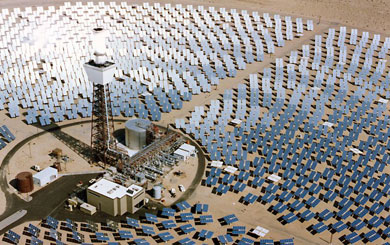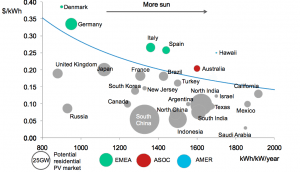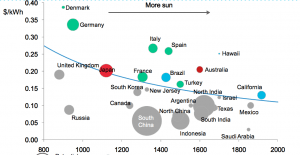Catholic group seeks change in US birth control policy
Sat Jun 16, 2012 7:12am IST
* Catholic group wants broader religious exemption
* Says government should pay for contraceptives
By David Morgan
WASHINGTON, June 15 (Reuters) - The biggest U.S. network of nonprofit health facilities formally asked the Obama administration on Friday not to require Roman Catholic-affiliated institutions including hospitals to provide employees with health coverage for contraceptives.
The Catholic Health Association of the United States, which initially welcomed White House efforts to find compromise with Catholic authorities on the contraceptives issue, said administration proposals have not satisfied its concerns about emergency contraceptives that could interfere with a fertilized egg.
The Obama administration's decision in January to require employers including religiously affiliated hospitals, universities and charities to provide employees with access to coverage for contraceptives without copays or deductibles has ballooned into a major battle in an election year.
The Catholic Church considers artificial contraception to be a sin and the administration's demands on contraceptives have been decried as a violation of religious freedom.
Catholic bishops and other social conservatives including top Republicans have called on the administration to exempt any employer who professes moral concerns about the policy. A number of Catholic institutions, including the University of Notre Dame, have also sued in federal court to block its enforcement.
Meanwhile, women's groups and other secular organizations have decried the flap over contraception as a conservative effort to curtail women's reproductive rights.
The Catholic Health Association, which represents more than 2,000 healthcare sponsors, systems and facilities, is seeking relatively narrow action by calling on the administration to expand its exemption for churches, synagogues, mosques and other places of worship.
"It is imperative for the administration to abandon the arrow definition of 'religious employer' and instead use an expanded definition to exempt from the contraceptive mandate, not only churches, but also Catholic hospitals, health care organizations and other ministries," the association said in a June 15 letter to Marilyn Tavenner, acting administrator for the U.S. Centers for Medicare and Medicaid Services.
"If the government continues to pursue the policy that all employees should have access to contraceptive services, then it should find a way to provide and pay for these services directly without requiring any direct or indirect involvement of 'religious employers'," the letter said.
Officials at the White House and U.S. Department of Health and Human Services had no immediate comment.
But an administration official, who spoke on condition of anonymity, said government proposals put forward up to now would ensure that religious organizations did not have to pay for or provide contraception.
The administration is currently working toward final policy language that would require insurance companies or other third parties to take responsibility for contraceptives coverage for the employees of religiously affiliated institutions.
"We will consider all the comments and suggestions from interested stakeholders before finalizing and implementing policies that respect religious liberty and ensure millions of women have access to recommended preventive services," the official said.
The administration policy, authorized under President Barack Obama's healthcare reform law, covers all contraceptives approved by the Food and Drug Administration including the so-called morning after pill, which women can take after sex to avoid becoming pregnant.
The Catholic Health Association said one of the FDA-approved drugs known as ulipristal acetate, or ella, could interfere with implantation of a fertilized egg.
"The Catholic Church considers a drug which interferes with the implantation of a fertilized egg to be abortifacient, based upon the known science of reproduction and the Church's belief that human life begins at the moment of fertilization," the association said.
Religious employers are not required to comply with the policy until Aug. 1, 2013, one year later than secular employers. (Editing by Lisa Shumaker)




















Solar PV can stand on its own merits now, so no need for any new FIT. Solar PV is a much more powerful and persuasive argument when you can reduce the dependence on FIT.
Will we see defections to offgrid systems if the price of storage systems also reduce ?
I would like to know what subsidies relate to the overall picture.
Besides NSW is not all of Autsralia.
What subsidies, Australia wide, both gas and coal generation apply?
There are no papers addressing the facts,that I can find, so if anyone can enlighten me I would appreciate that.
What do we do on an ongoing basis to subsidise fossil fuels, coal and gas?Not talking about transport, another subject.
Do you think that once PV rooftop reaches full scale “socket” parity the price would really trend further downwards, or just remain slightly under the competitive price and increase profitabibility of the solar sector.
Also, assuming large scale storage is not developed, what do you think the net effect of the night time retail price. Given you still need the same MW capacity, would the wholsesale unit cost of this capacity increase due to reduced daytime capacity factor?
Regards
It is extremely unlikely that it will ever go ahead, as cost of production will be at least $24 a ton above the sale price. The NSW Government is broke.
I agree it does not make sense. Let them pay market rates for coal.
Even through my Uni Library I can count the number of academic studies on one hand. Most are from interest groups on both sides.
Cross subsidies to rural areas, the same.
Renewable Energy Target $356 million
Feed in Tariffs $96 million
Qld Gas Scheme $38 million
Greenhouse Gas Reduction Scheme $3 million
Total $494 to $694 million(low to high)
The subsidisation has nothing to do with coal and gas.